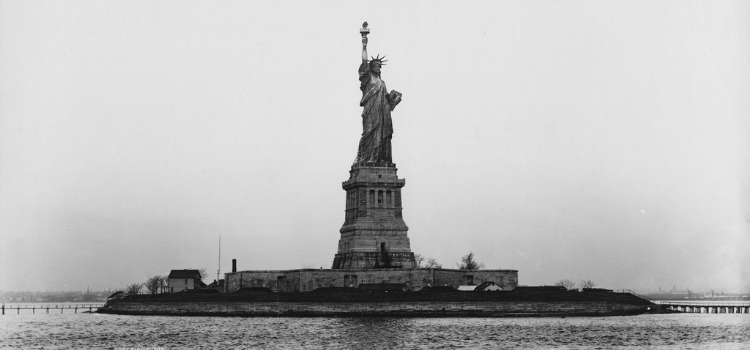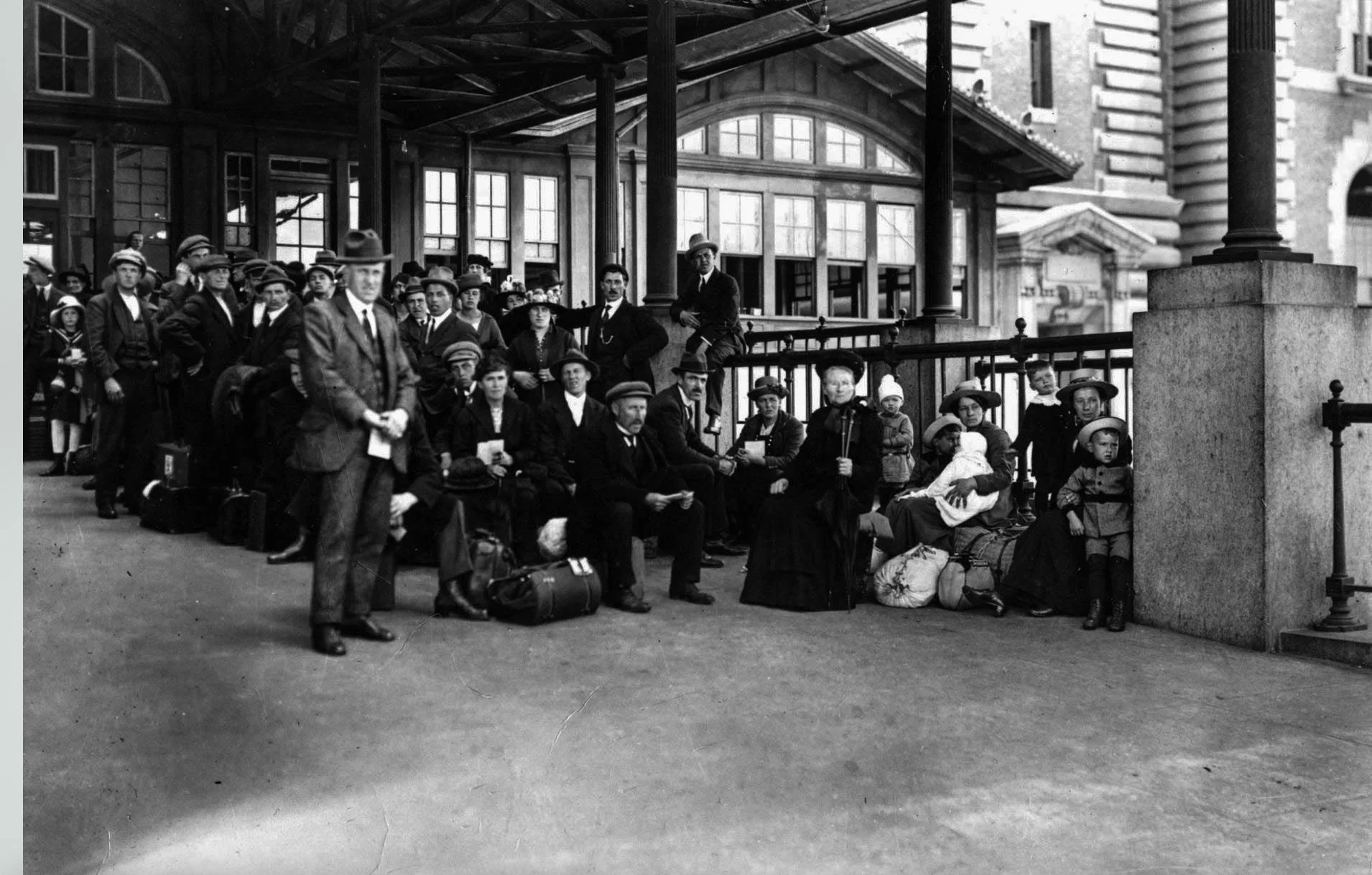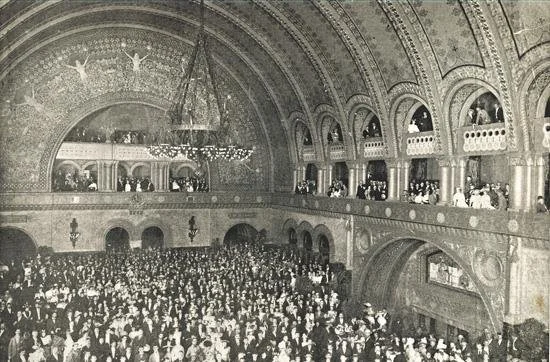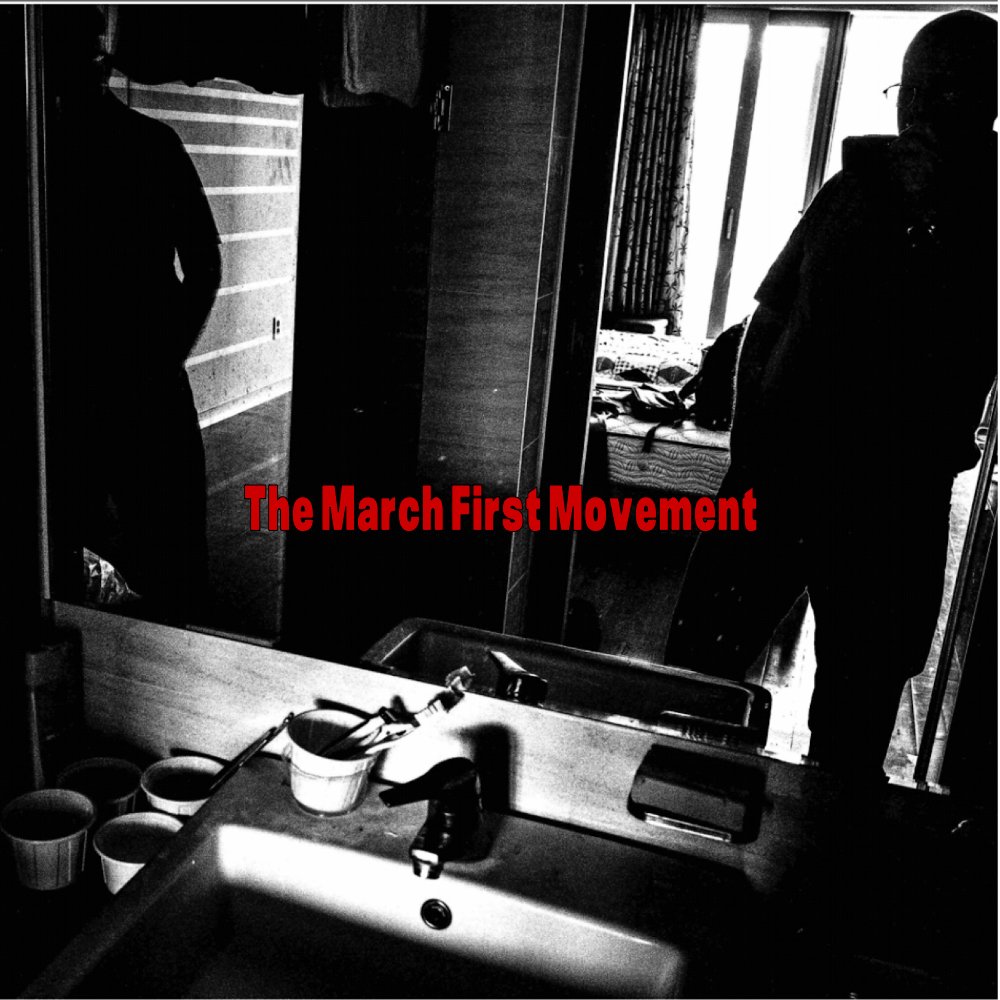Letter from Seoul 45
Immigrants Dream of Hope
“This land is your land, and this land is my land
From California to the New York Island
From the Redwood Forest to the Gulf Stream Waters
This land was made for you and me.”
This Land Is Your Land
- Woody Guthrie (1912-1967)
Soon the S.S. Baltic was launched upon the deep; for a week it seemed lost in its unshored harborless immensities. Eight days later, on a Friday, far down in the lower bay of New York City, the Kennedys crowded to the rail of the S.S. Baltic to glimpse their first sight of America in the clean summer air.
The day was June 29, 1906.
Ships at anchor choked the harbor. Amid the trunks and suitcases, Martin and Ellen stood pressed to each other, enraptured by the sight of the Statue of Liberty. Their bodies leaned forward, and their hands gripped the railing of the ship as they waited to land. Ellen celebrated her eighth birthday two weeks before the ship left Queenstown.
In the early 1900s there could be as many as 15,000 immigrants arriving in one day, and the ships had to drop anchor and wait. Yet there, on the horizon, stood Manhattan. Closer, it grew into a cluster of pinnacles known as skyscrapers. And then the midtown skyscrapers topped the ones first seen. To most Europeans, New York was unlike any other city in the world.
Until 1892, European immigrants were cleared for entry at Castle Garden, once a fort, and then a theater and a public amusement place down at the Battery. However, the volume of immigrants grew so great, and so many of them managed to disappear into Manhattan before being “processed,” that a larger and more isolated sorting point was necessary. So, from 1892 on, once immigrants were tagged with numbers they were shipped aboard a ferry or a barge to Ellis Island.
The early Dutch settlers used Ellis Island as a picnic ground. Much later landfill increased its three acres into 27-acres.
Of the 1,827 passengers crammed aboard the S.S. Baltic, 83 people were held for inquiry by U.S. Immigration authorities at Ellis Island. Another 147 passengers were detained for an unspecified time.
On ship documents, both of the older girls, Delia Higgins and Mary Kelly, were listed as servants. The party of third-class immigrants possessed the necessary three features: an exit paper, the equivalent of enough money to prevent becoming a public charge, and the price of passage.
John Kennedy provided the passage for both his children and Kate's niece, Mary Kelly. Delia Higgins paid her own way. According to ship records, both Delia Higgins and Mary Kelly listed John Kennedy as an “uncle.” Delia had been to St. Louis in 1905; Mary Kelly visited the city once before, when she was eight-years-old.
Immigrants at Ellis Island waiting to be processed
After being inspected and receiving permission to leave the island, Delia Higgins and Mary Kelly made travel arrangements to St. Louis. Like so many immigrants, they were given tags to pin to their hats or coats. The tags showed the railroad conductors what lines the immigrants were traveling and what connections to make to reach their destinations.
The two women also arranged for something to eat and exchanged their money for American dollars. For Martin, this was the time to relinquish all his sovereigns - the shillings, sixpences, half crowns and crowns - for American currency: pennies, nickels, dimes, quarters, half-dollars and dollars.
Missing were scores of other relatives who remained behind in Balla. There were the Roche cousins: Patrick, Sarah, Thomas, Mary, Maggy, Michael, Ellen, James Martin and Agnes.
There were also the Higgins cousins: Patrick, James, Martin, Cary, William, Thomas, and Maggie.
Michael and Bridget (McDonagh) Kennedy, of Knocknamoghlaun, had three young daughters, Mary, Anne and Bridget, and a son: Patrick Kennedy, who all attended the Facefield National School.
Michael Kennedy, the second cousin of John Kennedy, served as a sponsor for Ellen's baptism on June 8, 1898. James and Mary (Reilly) Kennedy, of Rathduff, also remained in the parish. The 58-year-old James Kennedy of Rathduff was John Kennedy's second cousin. James and his wife, Mary, had four sons: John, Michael, James and Edward.
Yet waiting in St. Louis was John Kennedy and his wife of two years, the 43-year-old Kate. John was already 54-years-old, and had not seen his two children in more than six years.
There were other relatives in St. Louis, too. Martin's Aunt Bridget and her children - Will and Martin Harrigan, and John and Nonie Cloonan - all lived nearby on 3631 Cottage Avenue, between Grand Avenue and Fall Avenue, with her husband, David Cloonan. Martin Kennedy and John Cloonan were virtually the same age. Both Nonie Cloonan and Ellen Kennedy were born in 1898.
Living five blocks north of the Kennedy house at 2519 North Spring Avenue, between Maffit and St. Louis Avenues, were Martin's Aunt Annie and her two children - Annie and William, with her husband, John Staed, a policeman. Annie Staed, the daughter, was born on June 3, 1899. She was a year younger than Nonie Cloonan and Ellen Kennedy. William Staed was born on February 10, 1903.
Still working as a laundress at the Laclede Hotel was Martin's aunt, Onie Kennedy.
In St. Louis, the big news at the beginning of the first week of July was how Frank Shea rescued Mathilda Strassberger, when their small boat capsized in fifteen-feet of water on Creve Coeur Lake. In Illinois, the mayor of Springfield led a posse that pursued a bandit for 18 miles, after the gunman fatally wounded the police chief in a shoot-out.
The approach of the train from New York City was made more and more evident by a bustle of preparation in Union Station, the rush of porters, the appearance of attendants, and the arrival of people meeting the train. Through the steamy vapor could be seen workmen crossing the network of rails. The whistle of an engine and the rumble of something heavy could be heard in the distance.
St. Louis - Union Station
At last the passenger coaches jolted to a standstill. An attendant jumped out, blowing his whistle as he did so, and then one by one the impatient passengers began to get down.
After so many years, Martin finally saw his father and stepmother. John Kennedy looked at his 10-year-old son, as he used to look at him years before. And he grasped him by both arms, and would not let him go.
- I am so overjoyed to see you.
Martin brushed away the tears that his utmost resolution had not been able to keep back.
- Would you like to go home?
- I would. What sort of place is it?
- Oh, a fine place.
Ellen approached her new step-mother bashfully, yet Kate's smile of quiet affection quickly reassured her. A dull hum of movement came from the waiting room of the station, as from a beehive. Kate gave Ellen her hand and they set off side by side across the length of Union Station and walked up the great flight of stairs to Market Street.
The Kennedy family, reunited after six years, left Union Station with numerous suitcases. Both Delia Higgins and Mary Kelly had their hands full, too. Everyone stood together on Market Street, opposite Union Station, and waited patiently for a west-bound electric streetcar. Delia Higgins, with all her luggage, looked like a female Robinson Crusoe.
After a transfer at Grand Avenue, just north of Olive Street, the group boarded a north-bound streetcar. They traveled as far as Cass Avenue, and then walked a few blocks to the Kennedy house on North Spring Avenue.
Martin entered the two-story house, pausing in the hallway, which was ablaze with a gaslight, only long enough to see his face for an instant in the mirror. Later that first night in St. Louis, Martin dozed lightly in his chair, no longer aware of what his father was saying. There was a discrete murmur of voices, and shoes could be heard squeaking across the wooden floor. Martin began to dream.
It was towards 10 p.m., the time John Kennedy generally said goodnight. He pulled out a wisp of straw and gently tickled his son's ear. John burst out laughing when he saw the young boy sit up straight.
- Ah, Mairtin, a bouchal dhas (my handsome boy), you are beaten by the sleep at last. Leave the chair and go to bed.
Martin looked at the clock. He had not felt the time passing. At that moment, the stillness of the humid St. Louis night overwhelmed the household. It was a hot July night. On Sunday, July 1, the temperature had already reached 88-degrees by 7 a.m. Luckily, the forecast called for showers and cooler temperatures by Monday night. Cooler weather was predicted over the next 24-hours.
Holding onto the banister, Martin pulled himself up the stairs and then into his room. He looked at nothing, but fell face down on his own bed. For the first time in six years, he was home with his father.





































